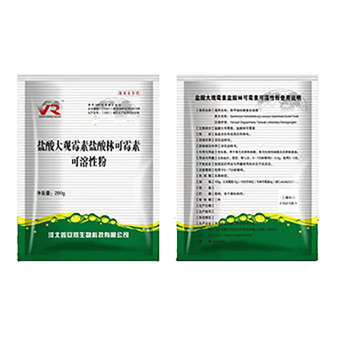- Afrikaans
- Albanian
- Amharic
- Arabic
- Armenian
- Azerbaijani
- Basque
- Belarusian
- Bengali
- Bosnian
- Bulgarian
- Catalan
- Cebuano
- Corsican
- Croatian
- Czech
- Danish
- Dutch
- English
- Esperanto
- Estonian
- Finnish
- French
- Frisian
- Galician
- Georgian
- German
- Greek
- Gujarati
- Haitian Creole
- hausa
- hawaiian
- Hebrew
- Hindi
- Miao
- Hungarian
- Icelandic
- igbo
- Indonesian
- irish
- Italian
- Japanese
- Javanese
- Kannada
- kazakh
- Khmer
- Rwandese
- Korean
- Kurdish
- Kyrgyz
- Lao
- Latin
- Latvian
- Lithuanian
- Luxembourgish
- Macedonian
- Malgashi
- Malay
- Malayalam
- Maltese
- Maori
- Marathi
- Mongolian
- Myanmar
- Nepali
- Norwegian
- Norwegian
- Occitan
- Pashto
- Persian
- Polish
- Portuguese
- Punjabi
- Romanian
- Russian
- Samoan
- Scottish Gaelic
- Serbian
- Sesotho
- Shona
- Sindhi
- Sinhala
- Slovak
- Slovenian
- Somali
- Spanish
- Sundanese
- Swahili
- Swedish
- Tagalog
- Tajik
- Tamil
- Tatar
- Telugu
- Thai
- Turkish
- Turkmen
- Ukrainian
- Urdu
- Uighur
- Uzbek
- Vietnamese
- Welsh
- Bantu
- Yiddish
- Yoruba
- Zulu
نويابىر . 06, 2024 02:08 Back to list
A Comprehensive Guide to Understanding Antibiotics and Their Clinical Use
Understanding Antibiotics A Comprehensive Overview
Antibiotics are powerful medications that have transformed modern medicine by providing effective treatments for bacterial infections. Initially discovered in the early 20th century, antibiotics have saved countless lives and play a critical role in medicine today. This article aims to provide an overview of antibiotics, their mechanisms, types, usage, and the challenges surrounding them.
The Discovery of Antibiotics
The journey of antibiotics began with the accidental discovery of penicillin by Alexander Fleming in 1928. This breakthrough marked the start of the antibiotic era and led to the development of numerous other antibiotics. By the 1940s, penicillin was mass-produced and used widely during World War II, dramatically reducing the death rates from infected wounds and other bacterial diseases.
Mechanisms of Action
Antibiotics function by targeting specific features of bacterial cells, which distinguishes them from human cells. There are several mechanisms through which antibiotics act
1. Inhibition of Cell Wall Synthesis Certain antibiotics, like penicillin, interfere with the formation of the bacterial cell wall, causing the bacteria to burst.
2. Protein Synthesis Inhibition Antibiotics such as tetracyclines and macrolides bind to the bacterial ribosome, hindering the production of proteins necessary for bacterial growth and reproduction.
3. Nucleic Acid Synthesis Blocking Fluoroquinolones, for example, prevent bacterial DNA replication by inhibiting enzymes required for DNA synthesis.
4. Metabolic Pathway Disruption Some antibiotics, like sulfonamides, mimic substances that bacteria need but are not found in human cells, effectively starving the bacteria.
Types of Antibiotics
Antibiotics can be classified into several categories based on their chemical structure and mechanism of action
antibiotic book pdf

- Beta-lactams This group includes penicillins and cephalosporins. They are among the most widely used antibiotics and are effective against a variety of bacterial infections.
- Aminoglycosides These antibiotics, which include gentamicin and amikacin, are often used for severe infections caused by Gram-negative bacteria.
- Macrolides Such as erythromycin and azithromycin, macrolides are commonly used to treat respiratory tract infections and other conditions.
- Tetracyclines These are broad-spectrum antibiotics effective against many types of bacteria and are often used for acne treatment and Lyme disease.
- Glycopeptides Vancomycin is a well-known glycopeptide antibiotic used to treat serious infections caused by Gram-positive bacteria.
Proper Use of Antibiotics
While antibiotics are essential for treating bacterial infections, their misuse can lead to antibiotic resistance. This occurs when bacteria evolve to become resistant to the effects of medications that once effectively killed them. Factors contributing to antibiotic resistance include overprescribing by healthcare providers, incomplete courses of treatment by patients, and the use of antibiotics in livestock.
The Challenge of Resistance
Antibiotic resistance poses a significant threat to global health. According to the World Health Organization (WHO), antibiotic resistance could result in 10 million deaths annually by 2050 if no action is taken. Addressing this issue requires a multifaceted approach improving antibiotic stewardship, increasing public awareness, investing in research for new antibiotics, and promoting alternatives such as vaccines.
Conclusion
Antibiotics remain a cornerstone of modern medical practice, vital for treating infections, performing surgeries, and ensuring the success of therapies like chemotherapy. Understanding the complexities of antibiotic action, classes, and the challenges of resistance is crucial for healthcare professionals, patients, and society as a whole. By promoting responsible use and supporting research, we can preserve the effectiveness of these life-saving drugs for future generations. Continued education and awareness about antibiotics will ultimately help combat the rising threat of antibiotic resistance, ensuring that these medications can continue to save lives for years to come.
-
Guide to Oxytetracycline Injection
NewsMar.27,2025
-
Guide to Colistin Sulphate
NewsMar.27,2025
-
Gentamicin Sulfate: Uses, Price, And Key Information
NewsMar.27,2025
-
Enrofloxacin Injection: Uses, Price, And Supplier Information
NewsMar.27,2025
-
Dexamethasone Sodium Phosphate Injection: Uses, Price, And Key Information
NewsMar.27,2025
-
Albendazole Tablet: Uses, Dosage, Cost, And Key Information
NewsMar.27,2025













